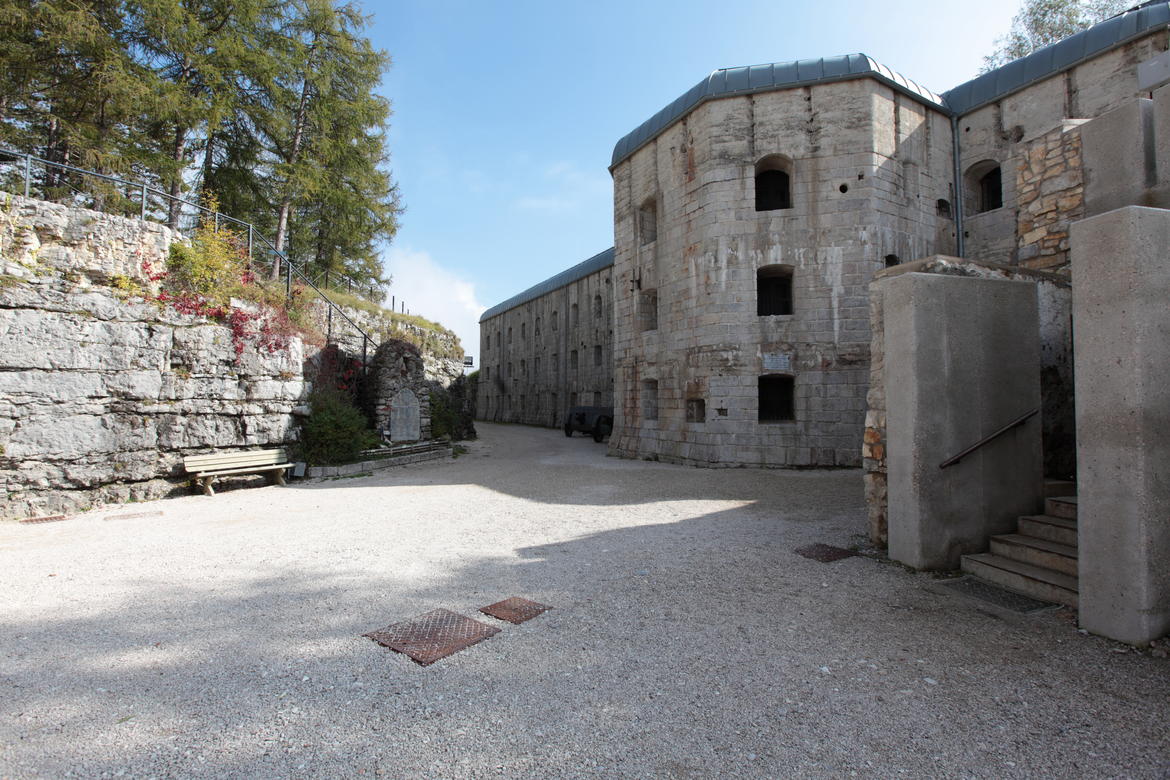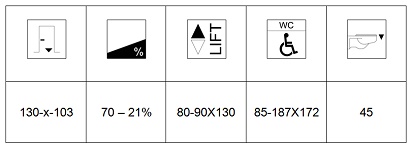Fort Belvedere Werk Gschwent
Built between 1909 and 1912, Fort Belvedere functioned in conjunction with the Cherle-San Sebastiano Fort

Fort Belvedere Werk Gschwent was built between 1909 and 1912 on a headland overlooking Astico Valley near Oseli di Lavorone at an altitude of 1177 metres and functioned in conjunction with the Cherle-San Sebastiano Fort. Its structure is similar to Fort Serrada but distinguishes itself through the simplicity of its geometrical plan which, like Fort Pozzacchio, exploited a rocky outcrop and supporting terrain, permitting the main casemate to be sunk underground by three levels.
The casemate was built of sculpted limestone and was divided in two parts. The back part, which overlooked the higher plains, dealt with all the facilities. The front part, which overlooked the valley and was partly dug into the rocks, cordoned off the positions and lookout points. At the side of the casemate there was a counterscarp ditch joined to the main casemate by an underground tunnel. On the three levels there was accommodation, storage, local technicians, a nurse and a cemetery. This fort had total control over Astico Valley and the road to Carbonare.
Even though it underwent heavy bombardment in the first days of the war, the garrison never lost control. After the Strafexpedition it remained known as “sentinella” of Astico Valley. Currently it is a museum and some locals have readapted the fort to their own original use (a photography exhibition).
Armaments:Three 19cm M09 Howitzers, 22 8mm MG M07 machine guns. Its light pierced through the darkness of Astico Valley by illuminating the road from Vena Pass to Fiorentini Osteria. Other spotlights were found along the communication trench.
Source: http://www.trentinograndeguerra.it
This museum belongs to the Rete Trentino Grande Guerra that promotes the collaboration between all those people who cultivate love for history and the memory of the events of the Great War
Notes on the accessibility to the site
The fort can be reached by car only if in possession of an invalid badge. Outside courtyard with dirt and regular ground. The entrance, which is always open, is preceded by a dirt gravel tract, about 15 meters long. Entrance door to the museum is always open. The indicated ramp is located close to the elevator (braille entrance panel), which serves the rooms of the museum on the upper floors. Ground floor open to visitors, with the exception of the "ex power station" room, which has a drop-down step at the entrance (average height 30 cm). The tunnels that offer to reach the stations have a slope of 5% and are passable only up to the stairs that recorded all the entrances. Access to the outside bar with a 118 cm wide door. The area above the fort (panoramic Belvedere) can be reached by dirt and irregular paths (various slopes from 3 to 10%). Access to the wooden walkway on the moat with a 10 cm height. Picnic area in the woods is reachable by a very irregular dirt road, 70 meters long (12% gradient). The indicated toilets are external to the fort and previous ones of anteroom (door always open 95 cm wide).
Information collected by the staff of the Cooperative HandiCREA.


